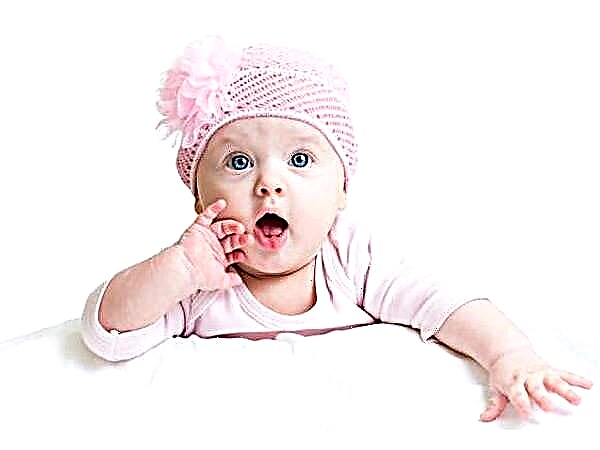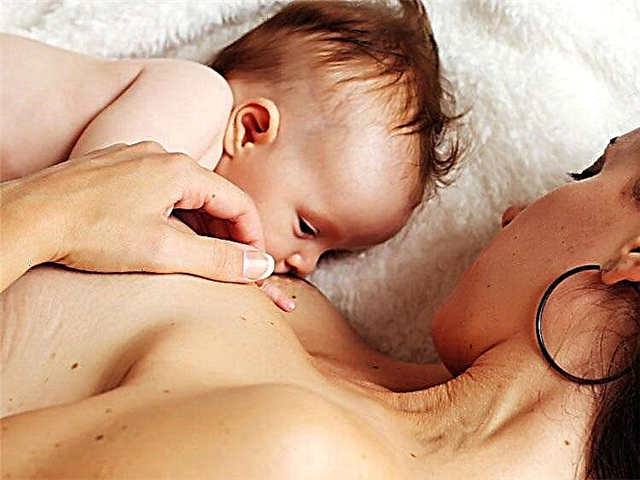Certain conditions of a newborn baby are of particular concern to parents, although in reality there is no cause for concern. So, in infants under three months of age, a crust often appears on the head. People call it "generic mud" or "milk crust", doctors use the term "seborrheic dermatitis" or "gneiss". In most cases, this condition does not require treatment and goes away on its own as the baby grows up.

A crust on the head is observed in every third child at the age of 1-3 months
Seborrheic crusts in a child under one year old
Infants often develop dirty gray crusts on the scalp and behind the ears. Parents usually rush to clean it up. According to pediatricians, this condition is not considered a pathology, and it is not necessary to remove the crust. Here are the main causes of seborrhea in young children:
- Imperfect work of the sebaceous glands;
- Difficulty adapting the child's body to new conditions;
- Allergic reactions to breast milk or formula;
- Hereditary predisposition to excessive production of sebum (the so-called "oily skin").
Seeing a dirty gray coating on a baby's head, parents often begin to worry and intensively treat the child with various folk remedies to cleanse the skin. However, there is no need for such help - gneiss usually does not cause any discomfort to the newborn and does not lead to disturbances in the functioning of the child's body.
Genital dirt, like children's intestinal colic, is just a baby's reaction to changing living conditions. Do not forget that the child spent 9 months in the mother's abdomen, therefore the neonatal period is an active adaptation of the body to new conditions, a new type of breathing and nutrition.

Children's seborrheic dermatitis is quite common.
Symptoms of generic dirt
So-called "generic mud" usually appears as a gray or dark yellow, light brown crust. It is especially noticeable if the baby has light sparse hair, and is practically invisible under the dark thick hair. These are soft, small crusts resembling fish scales. If you pry on such a "scale" with your fingernail, it can be easily removed; underneath is clear skin. However, this should not be done so as not to infect the infection. To remove generic mud, you can use only medicinal and cosmetic products. An effective way to mechanically remove flakes is to comb them out with a wooden or plastic comb.
Fighting gneiss at home
If crusts appear on the baby's head, the pediatrician will tell you how to remove them. There are several ways to deal with baby seborrhea, for example:
- Special creams;
- Shampoos for newborns;
- Gneiss treatment with sterilized sunflower oil;
- Mechanical removal with a comb.
Modern pediatricians do not recommend spending time and money fighting seborrhea. If an adult can comb out the crusts from the baby's head, they will soon reappear; this will continue until the child's body fully adapts to new conditions, and until the sebaceous glands work. In addition, in some cases, seborrheic dermatitis is caused by allergies; in this situation, only switching to a new formula or changing the diet of a nursing mother can help.
Purchase of medical and cosmetic products to get rid of scabs should only be in licensed pharmacies, as prescribed by a doctor. It is strictly forbidden to use hormonal ointments; they can only be used with a prescription from a pediatric allergist.

To combat gneiss at home, you can use children's cosmetics
Medicines and cosmetics
To remove gneiss at home, modern manufacturers of children's medicines and cosmetics produce special creams, shampoos and baby oils. When using these funds, you must strictly follow the instructions. In most cases, it is necessary to put some cream (oil) on the baby's head and put on a hat. When the time recommended in the instructions has passed, the child's head is thoroughly washed, and the crust is removed by itself, without additional combing.
However, these tools have their drawbacks. First, they are quite expensive. Secondly, when used frequently, oils and creams can dry out sensitive baby skin, cause allergies and irritation.
When choosing, it is recommended to give preference to brands of domestic cosmetics. Means for removing gneiss from the manufacturers "Moe Solnyshko" and "Ushasty Nyan" are very popular. From foreign products, it should be noted that the baby oil "BabyBorn", which is widely recommended by pediatricians. This product quickly and effectively helps to remove generic dirt, allowing baby skin to breathe freely. Also, BabyBorn oil does not cause allergic reactions and is suitable for sensitive skin.
Combing out
It is strictly forbidden to comb the scab on a dry head. This can hurt the baby and cause irritation. Before proceeding with the removal of gneiss, a little boiled vegetable oil should be applied to the scalp; you can also use petroleum jelly. After that, the baby is put on a flannel cap for an hour and bathed, having washed his head with baby shampoo. On steamed skin, the crust softens and leaves by itself; to remove it, it is enough to run through the hair with a comb with non-sharp teeth.
Important! You cannot use a metal comb, because iron teeth can easily damage the skin on the baby's head.
It is most convenient to clean the gneiss when the baby is sleeping or lying on his stomach. If the child is awake, he should be calm and in a good mood. Usually, the baby tolerates this procedure well, practically without feeling pain and discomfort. If there are a lot of crusts on the head, combing out is a rather lengthy process.
It happens that individual scales do not soften and do not lend themselves to a comb. In this case, they must be left as they are. The main thing is to wash the child's hair more often, and they will gradually disappear by themselves. Do not forcefully clean the crusts with a comb or brush, rubbing the skin.
Attention! If your baby has long hair, cut it short before combing out the crust. However, there is no particular sense in this - under the long hair, gneiss is practically invisible. The main thing is to keep your hair clean. If your child scratches his head a lot, it can damage the skin under the crust.
What you absolutely can't do
Pediatricians strongly prohibit:
- Use any folk remedies to remove gneiss without prior medical advice;
- Touch the crusts on the baby's head with dirty hands and tear them off with fingernails;
- Scratching the baby's skin with hard objects;
- Use sunflower oil to soften the crust, without first sterilizing it.
Do not smear the scalp with creams and oils too often, otherwise the skin will not breathe well, it will be even more difficult to get rid of the milk crust. It is strictly forbidden to use bath or toilet soap intended for adults to wash the baby's head. It contains a lot of alkali and dries out sensitive skin. Ideal for daily bathing - baby soap, shampoo for babies up to one year old or special foam.
Doctor Komarovsky says: if a baby has a lot of crusts on his head, you need to make sure that the baby does not overheat. Clothes that are too warm and too warm in the room dry out the skin and often lead to the formation of a large amount of gneiss. If the house is warm, the baby should be bareheaded at all times. You need to put on a cap only after bathing, until the hair is completely dry. Calico caps should be preferred, in flannel ones - children are often hot.

Do not allow your baby to scratch his head often.
Complications caused by seborrhea
Childhood seborrhea sometimes causes serious complications. The most common ones are:
- The appearance of abscesses as a result of skin infection;
- Dryness and irritation of the skin;
- Chronic eczema and dermatitis that are difficult to treat;
- The appearance of a large number of small ulcers and wounds on the head and trunk of the baby.
Fortunately, such complications are rare. In order to prevent their appearance, you should carefully monitor the condition of children's skin, especially on the head and behind the ears, where it is most sensitive to mechanical stress. If you have any crusts, sores or rashes, you need to show your baby to a doctor.
The most dangerous complications can arise if pathogenic microbes get into the wound under the "generic mud". To prevent this, parents should only touch the baby's head after washing their hands thoroughly. The same should be required from the doctor or nurse who examines the baby at home. If a healthcare professional is in no hurry to wash their hands, parents have every right to remind him of this.

Seborrhea can cause severe skin irritation in children
When to see a doctor
It happens that the baby has scabs not only on the head, but also on the whole body. Usually, this condition indicates food allergy or individual intolerance to formula milk, therefore, it is recommended to consult a doctor.
You should also visit the pediatrician if the baby often scratches and scratches his head - perhaps the crusts give him discomfort. A sharp reddening of the skin covered with gneiss is also a serious cause for concern. A change in the color of the skin may indicate the penetration of pathogenic microbes inside. If measures are not taken in time, the child may become infected with blood.
Attention! If in the place where the generic dirt is located, the skin is hot and dry, this indicates the penetration of the infection. In this case, you must urgently consult a doctor. The child may be prescribed a topical or general antibiotic to treat the inflammation.
Preventive measures
In order to prevent the occurrence of seborrhea, parents should not overheat the infant. Nursing mothers need to carefully monitor their diet, as gneiss is often caused by allergic reactions. Any hygiene and cosmetic products for bathing a baby must be age appropriate. If you follow these simple rules, your baby will have beautiful and clean skin, without "generic dirt". Hardening and daily hygiene procedures are of great importance in the prevention of any skin diseases.
If parents are very concerned about the appearance of "birth dirt" on the baby's head, you can consult a pediatrician or dermatologist. The main thing is not to self-medicate and not to peel off the crusts, so as not to provoke skin infection. The crusts on the head of infants often last for at least a year, this is not a reason for panic.



